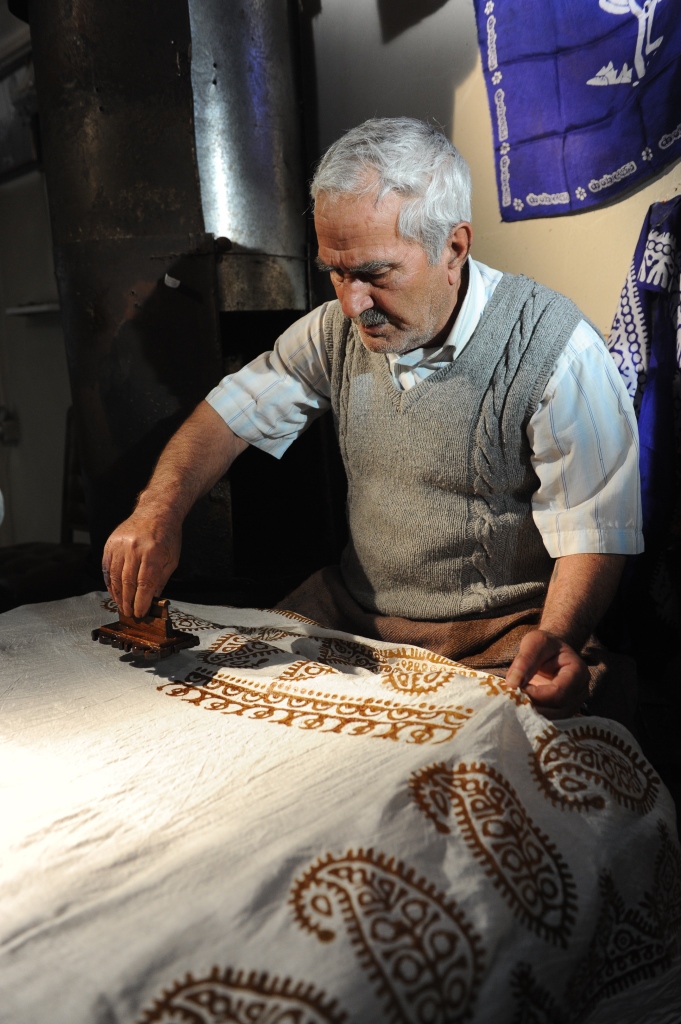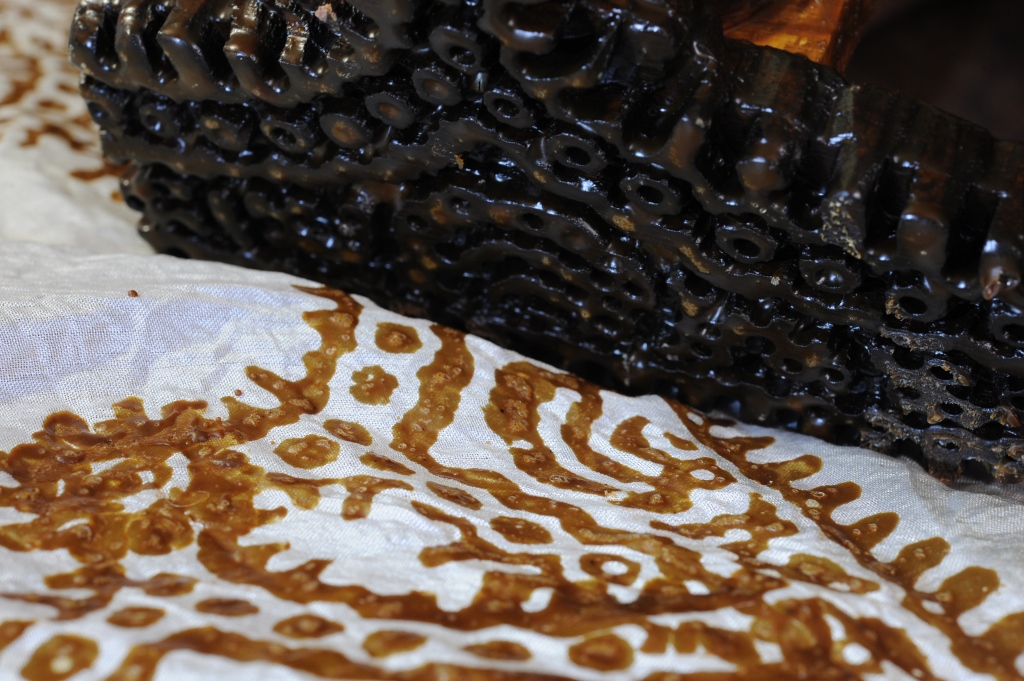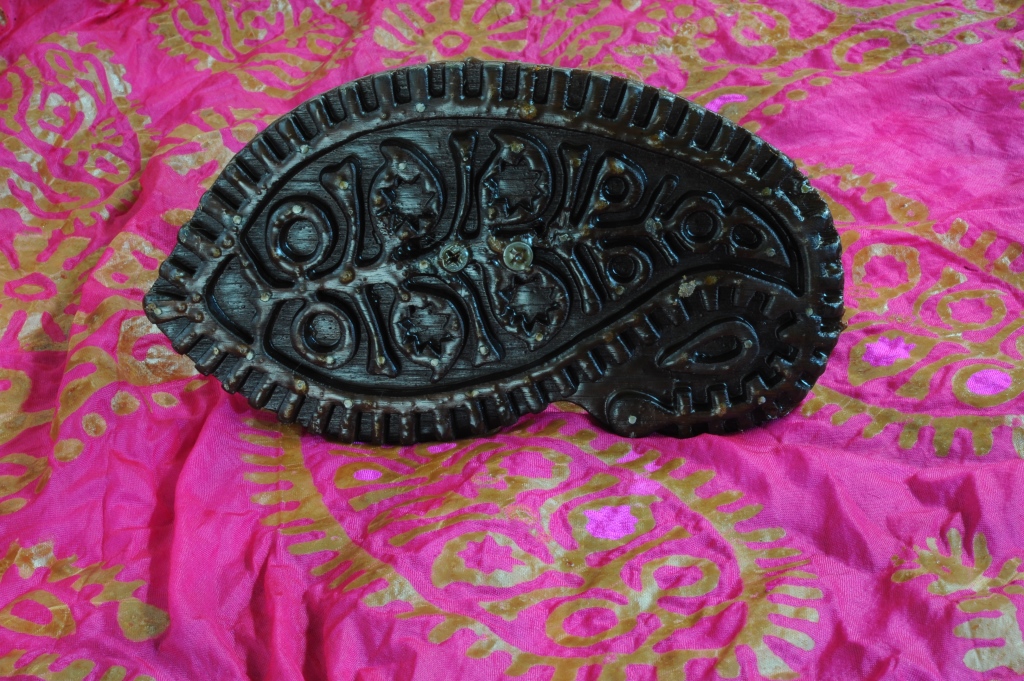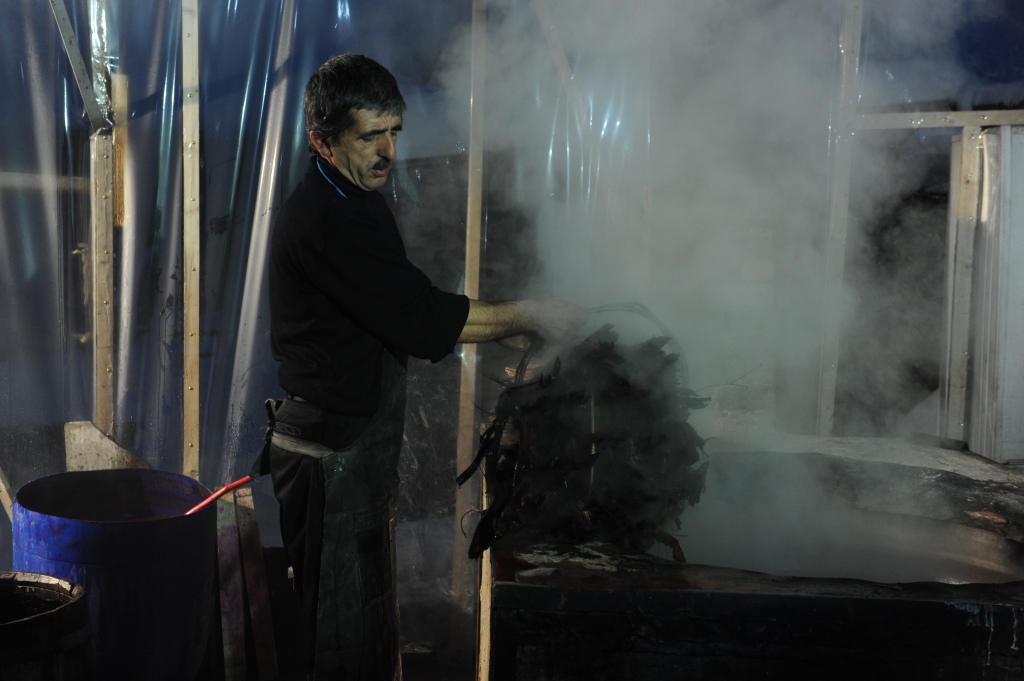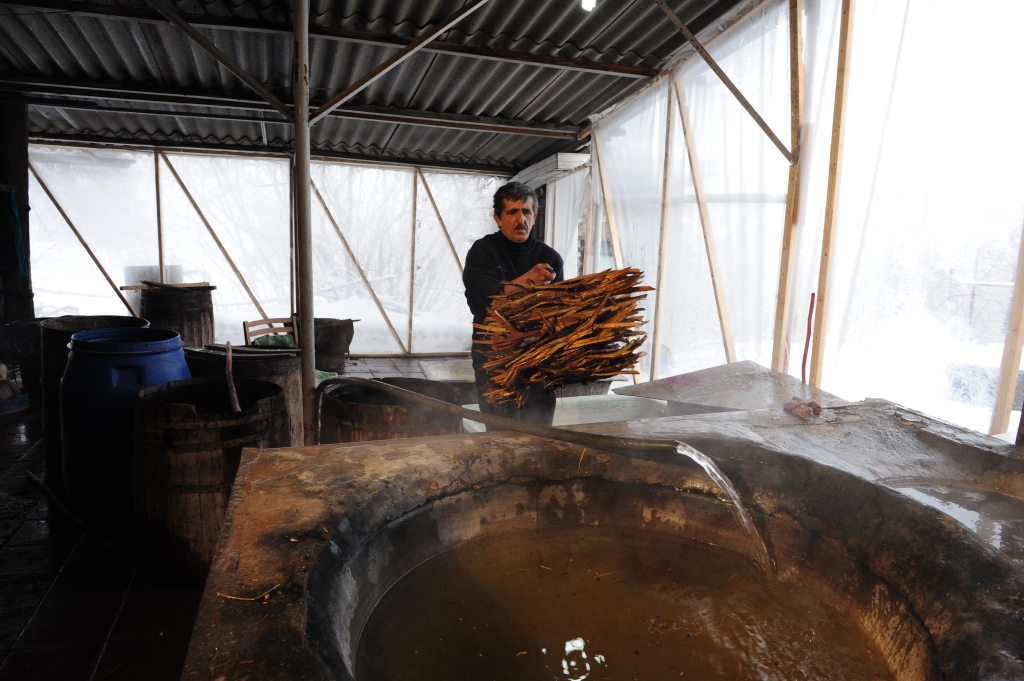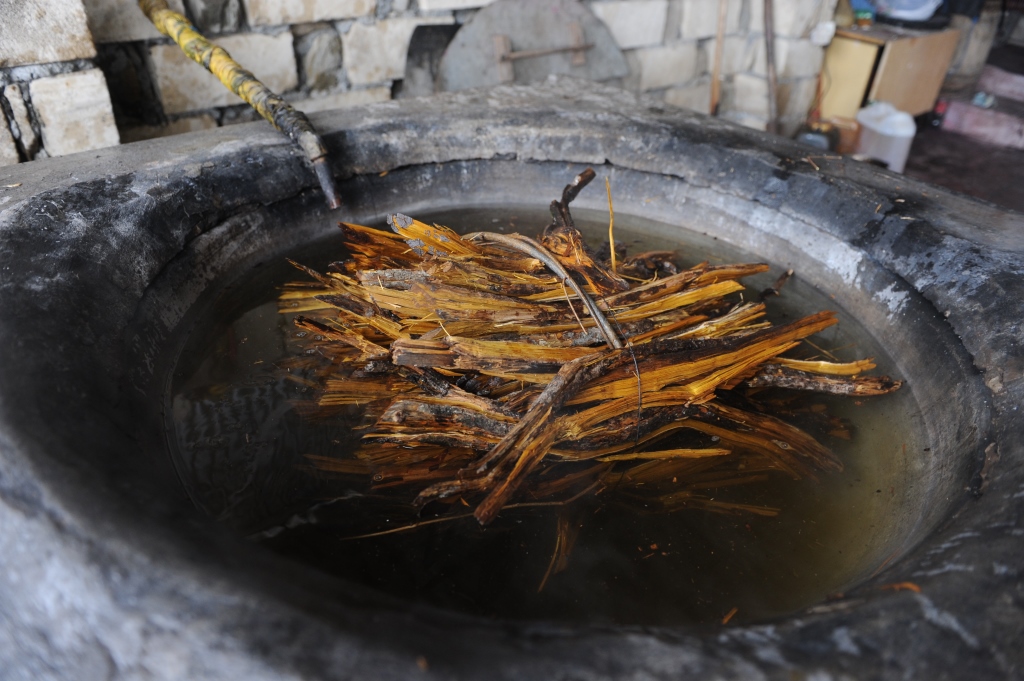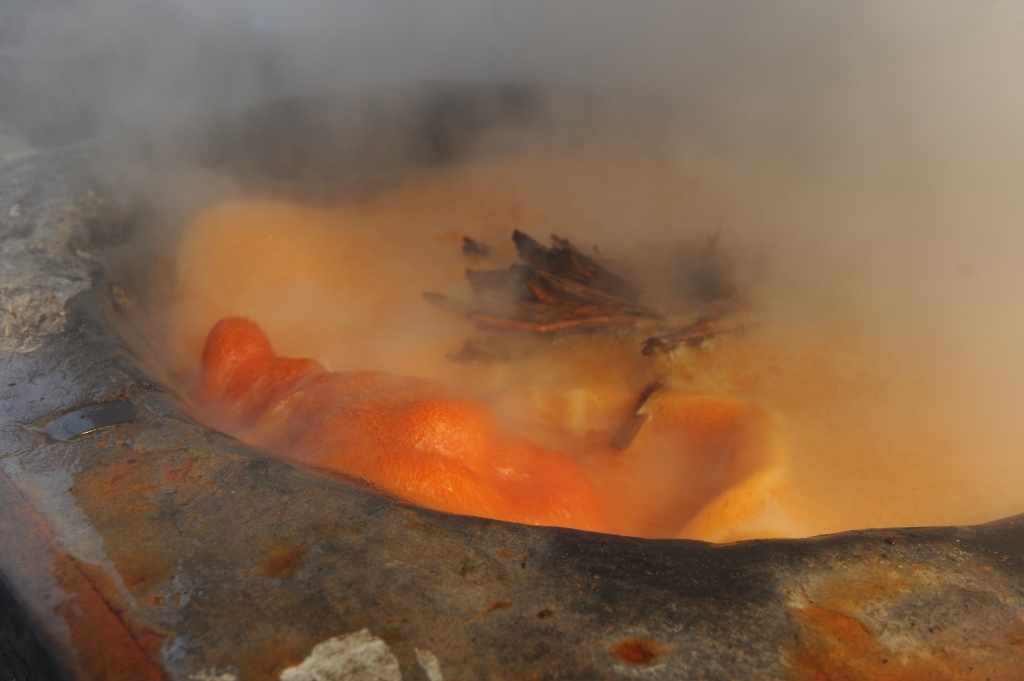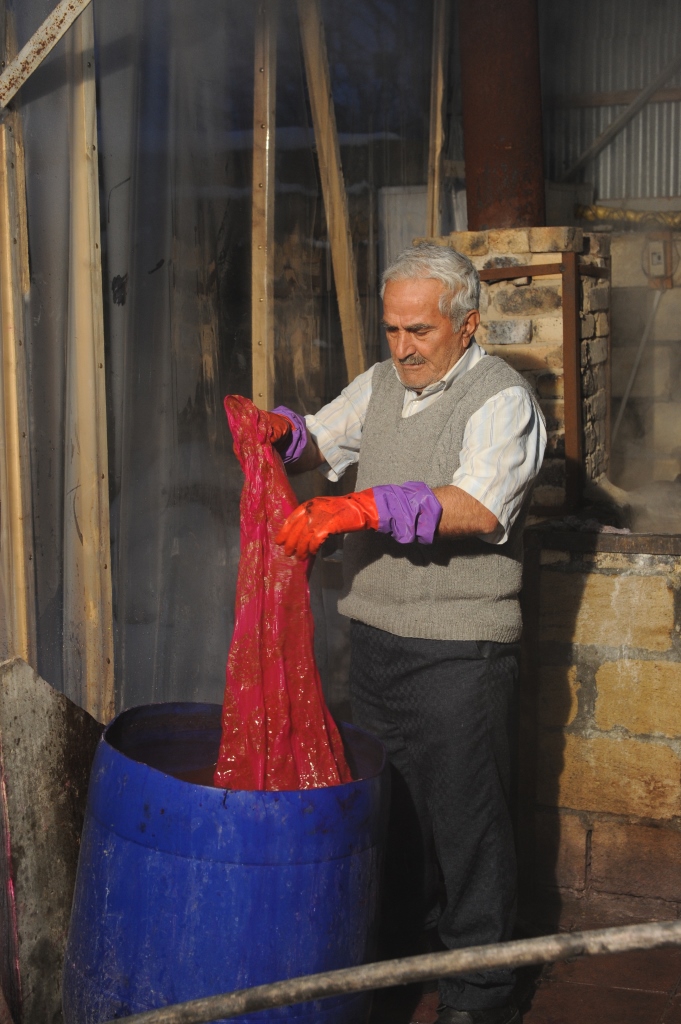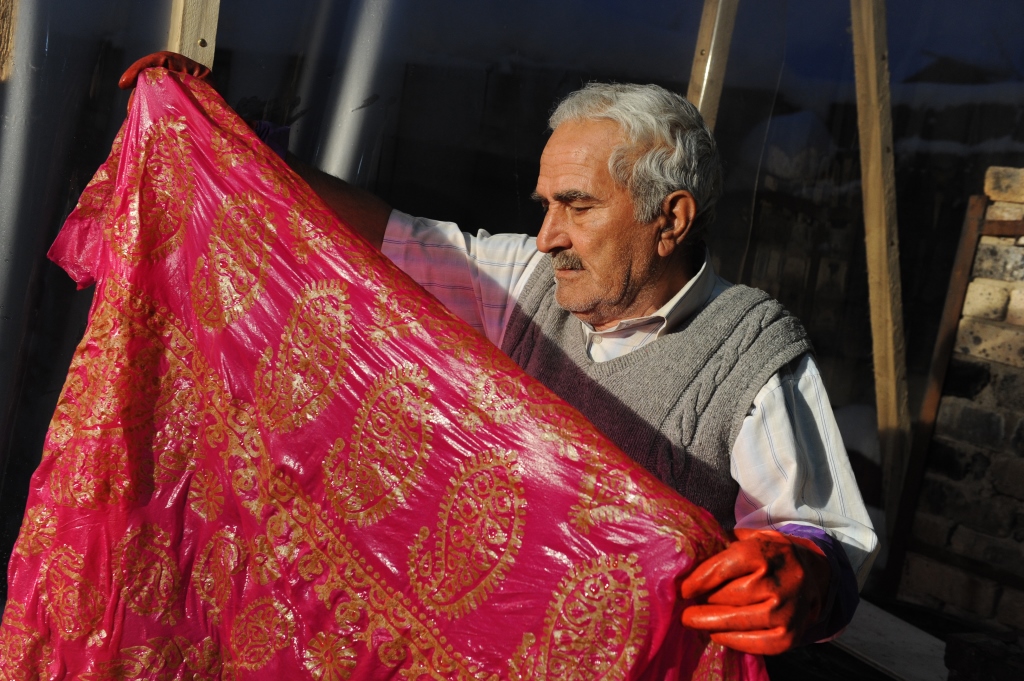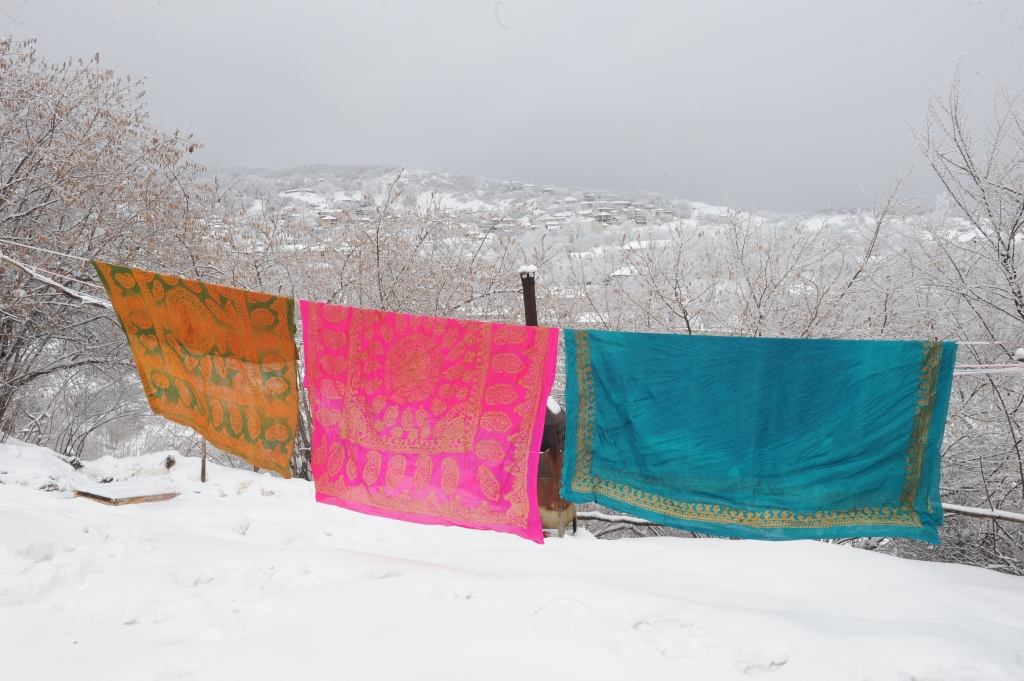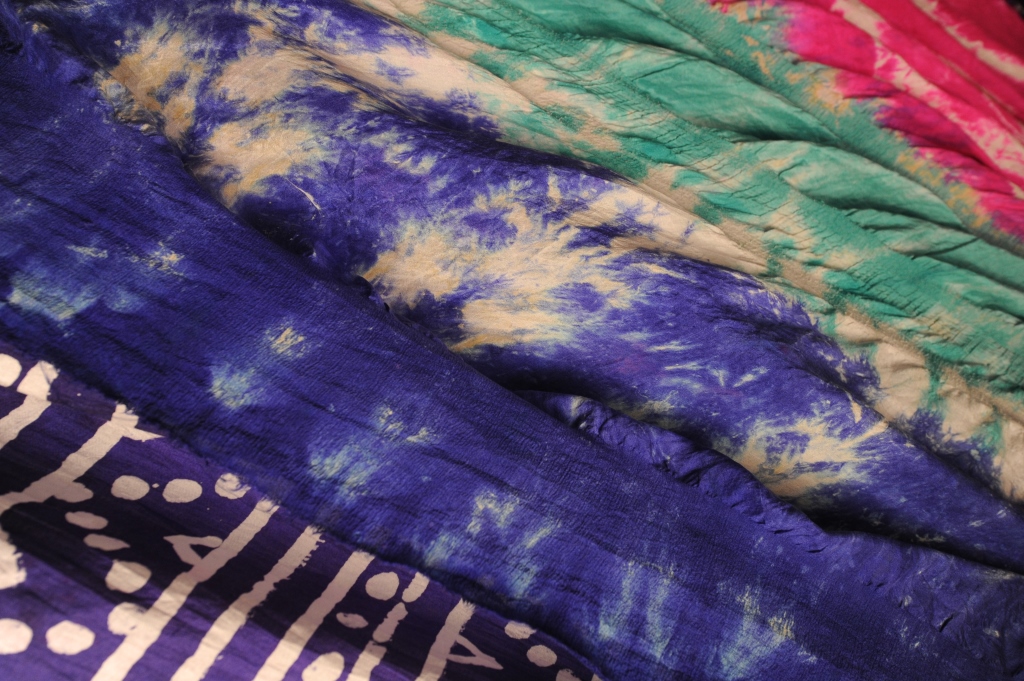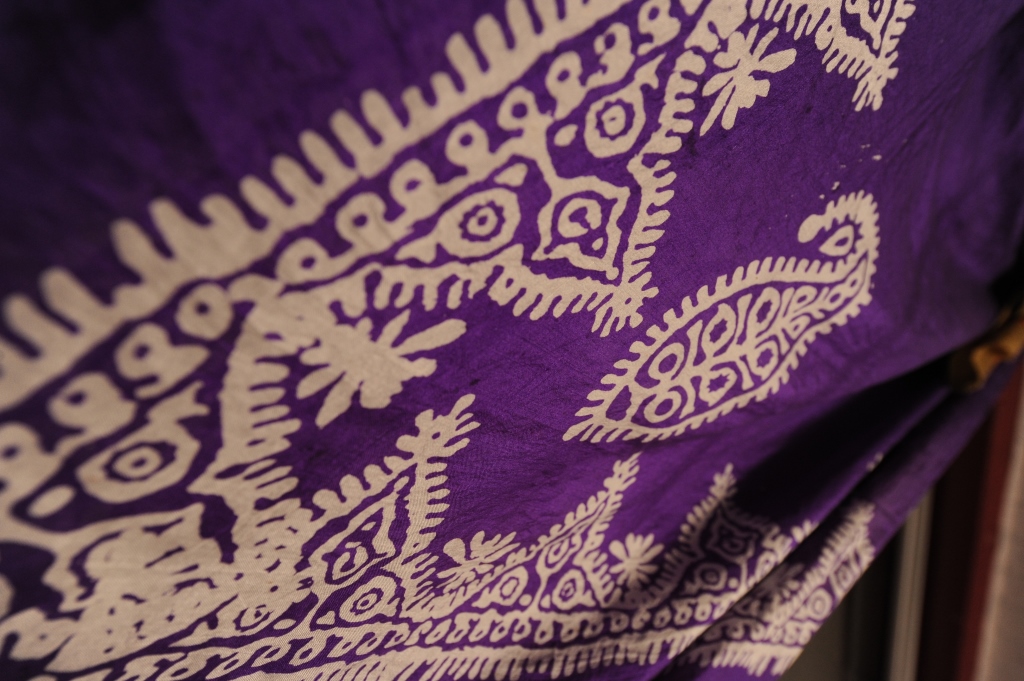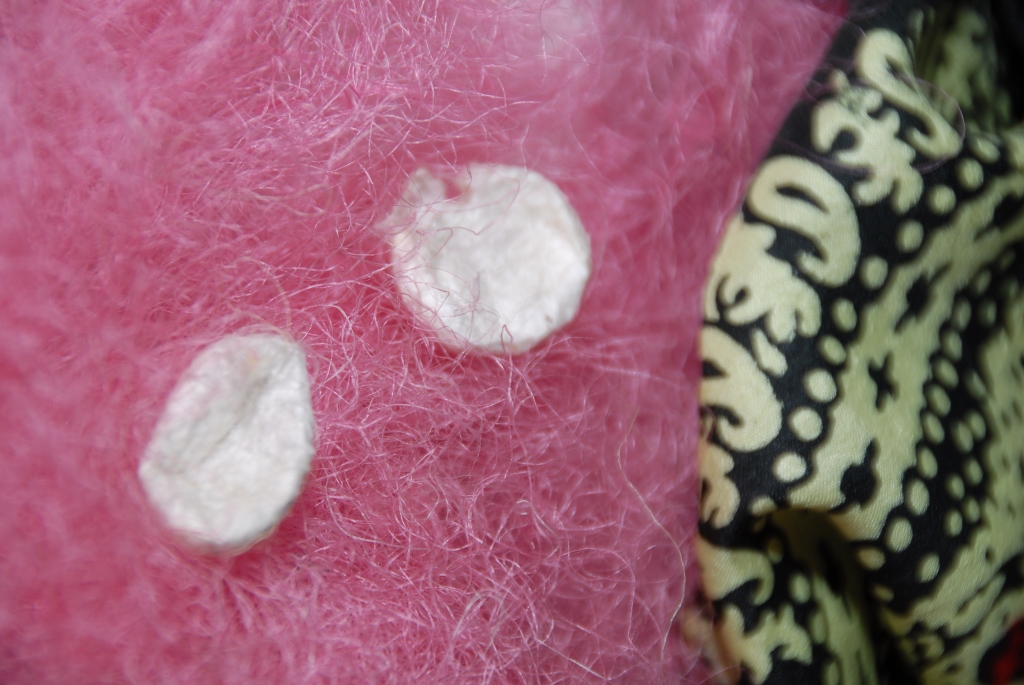About Kelaghayi
Kelaghayi
Silky way
Kelaghayi is a four-cornered shawl woven from floss thread and worn by the Azerbaijani woven. It is also called “chargat” in the western regions of our country. Besides being a symvol of chastity, respect and devotion, it also preserves the ancient history, culture and traditions of Land of Fires – Azerbaijan.
Kelaghayi has been making in Azerbaijan since ancient times. High quality kelaghayis were made in Tebriz. Ganja, Shamakhi, Sheki and Nakhchivan cities. Although this shawl were made in many regions, Kelaghayi was widely used in Basgal settlement of Ismayilly region which is located in 165 km northwest of Baku and in the same direction, but 320 km far from Baku in Sheki city.
The reason of weaving kelaghayi in these regions and its high quality undoubtedly was Sheki silk. The creation of this unique fabric is a great process and its history is more ancient.
Silkworm breeding in Azerbaijan dates to very ancient times and has passed a great development way. The researches show that the history of silkworm breeding dated to the periods before the Christianity. Sheki has been the center of silkworm breeding in Azerbaijan and also in the Caucasus for a long years. In the 20th century the largest silkworm breeding plant was established in Sheki. Sheki silk was recognized and appreciated not only in Azerbaijan, and also in the Eastern countries, Europe and Russia. Even during the reign of Nikolay II Sheki silk was used in making new five hundred notes in Russian empire. In the year 1862, Sheki silk was awarded medal at the international exhibition launched in London. Sent-Etyen Company of Lion city, France was a one of the permanent purchaser of Sheki silk. That is why for its successes achieved in the field of silkworm breeding Sheki was called “Caucasian Lion.” The clothes, fine needle-works and shawls made of Sheki silk were highly appreciated. For this reason the local population engaged in kelaghayi production produced silk in Sheki and created kelaghayi in Basgal. Therefore, despite a certain distance between two regions, they connected with each other by “floss ties.”
The travelers and diplomats such as A.Oleari, A.Jenkinson, E.Chelebi, A.Duma, F.Kotov visiting Azerbaijan in different years mentioned kelaghayi in their works. As is known, in the 1870 Baskal kelaghayi was awarded silver medal at the exhibition launched in London.
As production of kelaghayi having an ancient history is very complex process, a number of persons take part in his production, they are: weavers (tarrakh) (kelaghayi wearer), dyers (kelaghayi dyer), moulders (the persons decorating kelaghayi by mould), and kelaghayichi (ornamental master). It takes two days to dye and decorate this unique shawl having 125 gr weight and passing through a ring. Strange as it may appear, this woman shawl is produced by men. Only men could manage to work with boiling dyes and moulds.
The leading force in producing the shawl is considered a dyer. Because it requires hard work, masterly skill and delicate feeling to dye the finished kelaghayi in hot pot. Mainly, sumaq, barberry, wild apple, saffron, currant and other plants are used in dyeing kelaghayi having 150x150 cm and 160x160 cm size.
The ornaments of kelaghayi are made by wooden or metal moulds. The edges of kelaghayi, and sometimes its central part (khoncha) are decorated with geometrical or nabati ornaments. The patterns reflected in kelayagi have a great meaning and have been remained unchanged for hundreds years. Butas prevail over other patterns and they are one of the the most spread ornament elements in the Azerbaijan art. We should also state that the researches consider buta as a pattern belonging to fire-worship period.
Kelaghayis of each region differ from meach other with their patterns in the edges. Mainly, “Shah buta’, “saya buta’, and “khirda buta” patterns are used in Sheki and Basgal Kelaghayis. Colorful kelaghayis such as “Heyrati”, “Soghani”, “Istiotu”, “Albukhari”, “Abi”, “Yelani” gained a fame in the Middle East and Causasus peoples.
Individual forms and motives reflected in kelaghayi passed on to the daily life of population. So, it is possible to see the elements belonged to kelaghayi in sweets and bread, tombs and gravestones.
This shawl is often met in the Azerbaijani folklore, poetry, as well as fine and decorative art. Certainly, all the above-mentioned caused to reflect kelaghayi ornaments in the art of many world peoples.
One of the features of kelaghayi is provision of both heating and cooling. The silky fabric is very thin and soft, takes care of skin, and protects from different microbes.
Today, kelaghayi is used as dress element in Azerbaijan and its has no any relations with religion compared to chadra. Women wear kelaghayi for its color and form depending on their age. Old and elderly women wear kelaghayi as turban or dinge, but young women and girls used it as shawl. Women wear black kelayagi at the mourning ceremony and colorful kelaghayi at weddings. In general, elderly women wear dark color and large -sized kelaghayis, but young women wear colourful and small-sized kelaghayis.
In Azerbaijan kelaghayi did not only praise the women beauty. It also could considered the foundation of the new family. The woman presenting her kelaghayi to man promised to be devoted to her love forever. Or upon getting consent from the girl’s family the guests from the guy’s side presented a wedding ring wrapped up a red kelaghayi. Besides, during the henna ceremony the bride was worn a red kelaghayi and her hands and foots were hennaed. With regard to the role ogf kelaghayi at the wedding ceremony we could add that the bridegroom and his friends standing on the left and right sides were given kelaghayis. Even the most valuable thing in the khoncha of the women was kelaghayi. This traditions is still continued in some regions of Azerbaijan.
Sometimes when a man passes away he is covered with a black kelaghayi. It continues even till burial ceremony. It means that kelaghayi has been accompanying the Azerbaijan people for all their lives. This shawl also survives peaceful mission. During the conflict arisen from different reasons the people ceased fight when kelaghayi was thrown by a woman.
Kelaghayi is kept at the favorable place of house. It is possible to see it at home of the Azerbaijanis living outside the country. Because kelaghayi is a force protecting the family traditions.
Kelaghayi is such kind of shawls which is demanded every time. Although the fashion changes so rapidly, the size and patterns of the kelaghayi are remaining the same. It could be considerd as one of the long-lived shawls.
Demand for kelaghayi both in Azerbaijan and abroad survives this art up to now. Today, the dynasties continuing this type of art produce kelaghayi with pleasure in Sheki city and Basgal settlement. During different years the masters from Basgal and Sheki established the kelaghayi production not only in other regions of Azerbaijan, but also in Georgia, Turkmenistan, Iran, Russia and Uzbekistan.
At initiative of “Inkishaf” (Development) Scientific Organization, “Kelaghayi” Center is operating in Basgal. All kelaghayi traditions have been restored here. Also, a unique interactive “Kelaghayi” museum was established in Basgal. The visitors are not only familiarized with the history and traditions of kelaghayi, but also observe the process of production, even take part in making the product.
Kelaghayi is introduced as an essential element playing an important role in mode and daily life of our nation not only at the museum located in Basgal, but at the same time at State Museum of East Nations' Arts in Moscow, National Museum of History in Baku, Azerbaijan Art Museum. We can say with certainty that kelaghayi tradition is preserved not only by the people engaged in this profession, but in general by nation.


































